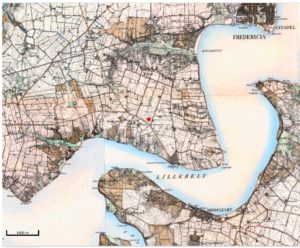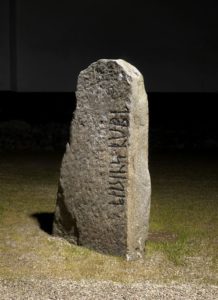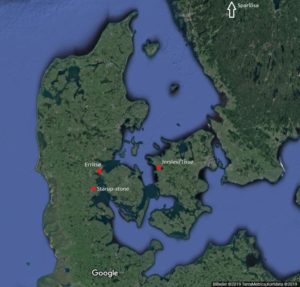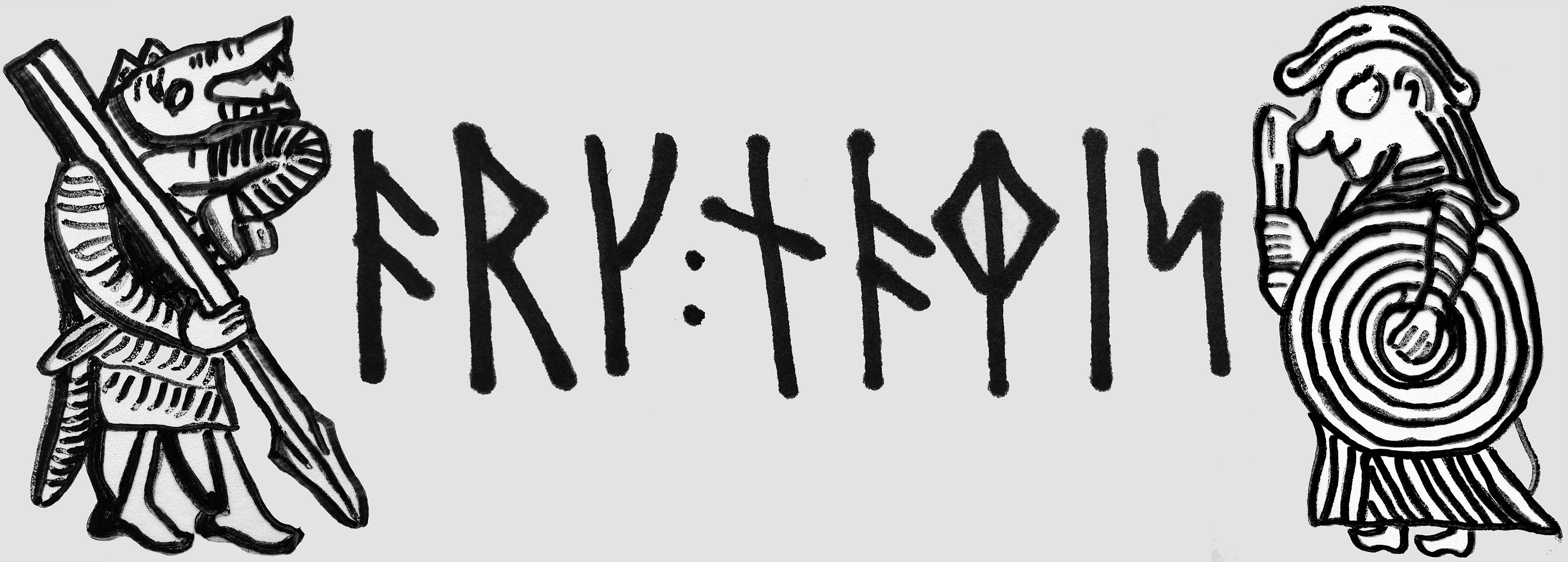The modern Scandinavian name Erik or Eirik seems to have become a common personal name in the Late Viking Age or Early Medieval period in Scandinavia. We often find it as a name of medieval Swedish, Norwegian and Danish kings. Yet, it also occurs in runic inscriptions and in place names ending in –toft and –torp. The dating of these place name types to the Late Viking Age and Medieval Period indicates that Erik/Eirik was in general use at least from the late Viking Period and onwards. At an earlier stage however, Erik/Eirik was probably not a name at all, but a compounded common noun *aina-rīkiaʀ, meaning ‘lone-ruler, the almighty’, likely referring to a supreme king, maybe even one whose supremacy was acknowledged by other kings. This word forms the first element in the Swedish Eriksgatan, the name of the route taken by medieval Swedish kings to have their rulership confirmed in the different lands of the realm.
Lately, new excavations by Vejle Museum and the Danish National Museum at Erritsø in eastern Jutland have caused attention. They reveal how the 9th century fortified hall that has been known for some years was not the only hall building at the site. A new 50 m long hall has been found that may be even older and the general outline with the hall and a smaller adjacent house are especially remarkable by their similarity to the elite sites at Lejre and Tissø, both on Zealand. Already, the archaeologists from Vejle museum, Mads Ravn and Christian Juel are suggesting that these similarities indicate how the same royal power may have been present in both eastern and western Denmark much earlier than the written sources reveal.

The find and the ideas put forward by the team made me return to some considerations of the name/word Erik and connections between Tissø and Erritsø I had while I was writing my PhD.
The first written evidence of the place name Erritsø is recorded in the late 13th century (before 1/7 1279) as Hærægsogh, but according to professor Bent Jørgensen, it is uncertain whether this recording really relates to Erritsø or to another place. Later in the early 14th century (Ribe Oldemoder 1330-48) it is written ærexhøgh. This and hereafter following recordings suggest that the name is an original compound of the personal name Erik and the generic[1] –høj, meaning ‘mound, hill’. However, as the personal name is very rarely seen as a specific[2] in the oldest place name types, we may rather be dealing with some sort of title, the above mentioned common noun *aina-rīkiaʀ. Stefan Brink has suggested a parallel interpretation for the similar name, Eriksör, ‘Erik’s mound’ near the famous Karlevi rune stone on the Swedish Island of Öland. Erritsø can thus be translated ‘the mound/hill of the almighty king’. This almost fits too well with the archaeologists’ interpretation of the impressive settlement lying on an elevated point in the landscape at Erritsø as the site of a royal power with rulership over both the eastern and western parts of Denmark.
Throughout my research, I have looked through Danish place names to find other pre-historic name types with the name Erik as a specific. The only good example I have identified is the present day village of Jerslev (in 1199 written as Erixleffue) in Western Zealand. In fact, this place is near lake Tissø and placed ca. 4 km north-west of the elite residence from the 6th – 11th centuries. As mentioned above, the new excavations at Erritsø have revealed striking similarities between these two sites. Jerslev is first mentioned as a curia, a large independent farm without underlying farms, among the property of the famous medieval archbishop Absalon, who belonged to the very rich Hvide-family. Finds from around this village suggest activities in the Early Iron Age (maybe even a fortification from this period) as well as the Viking and Medieval periods.

Jerslev is a compound of Erik and the generic –lev, a name type that is roughly dated to the period 300-800 AD. The generic –lev is often interpreted as ‘inheritance’. However, it can really only be understood as something that is ‘left over, given to, handed down’, so Jerslev can be interpreted as ‘the land that was handed over by/to the almighty king’.
Of course, these two place names, Erritsø and Jerslev may have been coined at very different points in time, so we cannot establish that they refer to the same Erik or lone-ruler. But the fact that they appear in connection with Tissø and Erritsø respectively, suggests that both places were at some point connected with a ruler who in some way deserved such an epithet. Someone who managed to bring other kings or larger areas under his rule.
There are other interesting similarities in the place name material around Tissø and Erritsø. You can read a summary in my PhD thesis on page 170.
Around 40 km as the crow flies south of Erritsø, we find a rune stone with the inscription ąiriks : kubl, Erik’s memorial. This is one of the earliest rune stones in Denmark, dated to the 8th or early 9th century. We usually expect commemorations on rune stones to render personal names, but here, we could also be dealing with the byname/epithet/title mentioned above. Unfortunately, the stone was used as a doorstep in Starup church built around 1100 AD, and we do not know where Erik’s memorial was located.

Obviously, all this may seem speculative, and we cannot be entirely sure whether the specific in the two place names (or on the rune stone) was in fact the personal name Erik or the title/epithet. This underlines one of the difficulties in working with ancient personal names: it can be almost impossible to distinguish names from appellatives. This is one of the questions that are discussed the most in research on personal names. In the case of Erik, it may depend on chronology, as the appellative transforms into a personal name and in the late Viking Age seems to have been well-established as the latter.
How did an exclusive title as *aina-rīkiaʀ come to be a widely used personal name? We do not know. It was most probably a process where the association of the word/name to certain individuals and their social role became more important in people’s general perception than the original meaning of the common noun. Maybe the descendants of a famed king used his epithet as a mark of kinship. On the impressive Sparlösa rune stone in Västra Götaland, Sweden from around 800 AD, we see how at least two individuals make an effort to claim their descent from an Airik (Erik).
In analogue with other personal names with the second element –rikʀ, ‘ruler, king’, the name could have come into use as a name for descending children. This will also be the reason why Erik/Eirik was such a common name among Scandinavian royal families in the Viking Age and the Medieval Period.

Further reading
Stefan Brink’s article Social order in the early Scandinavian landscape (1999).
Just published (2019) scientific article about the Erritsø site by the team of archaeologists.
[1] A generic is what we call the last element in a compound place name.
[2] A specific is a term for all the elements preceding the last part of a compound place name.

Hi Laurine,
interesting observations. has this been published elsewhere too. please give m a reference and maybe a pdf
sincerely one of the excavators of Erritsø
Pingback: Names of The Barbarians – ArcNames